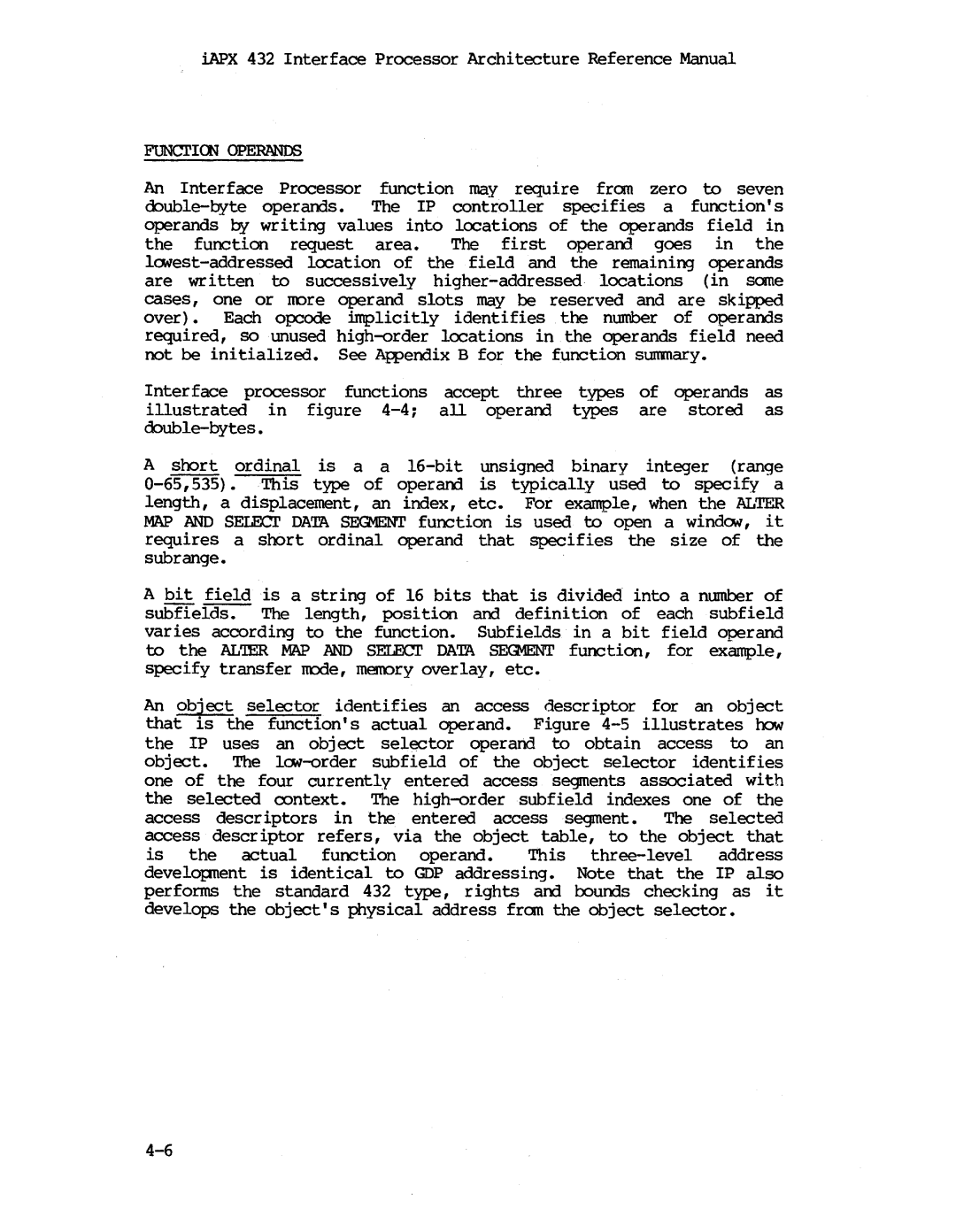iAPX 432 Interface Processor Architecture Reference Manual
FUNCl'IOO OPERANDS
An Interface Processor function may require fran zero to seven <DubIe-byte operands. The IP controller specifies a function's operands by writing values into locations of the operands field in
the function request area. The first operarrl goes in the lcwest-addressed location of the field and the remaining operands are written to successively higher-addressed locations (in some cases, one or nore operand slots may be reserved and are skipped over) • Each opcode implicitly identifies the number of operands required, so unused high~rder locations in the operands field need not be initialized. See Appendix B for the function surrmary.
Interface processor functions accept three types of operands as illustrated in figure 4-4; all operarrl types are stored as <DubIe-bytes.
A short ordinal is a a 16-bit unsigned binary integer (range 0-65, 535) • This type of operarrl is typically used to specify a length, a displacement, an index, etc. For example, when the ALTER MAP AND SELECr DATA SEGmNT function is used to open a windGl, it requires a short ordinal operand that specifies the size of the subrange.
A bit field is a str ing of 16 bits that is divided into a number of subfields. The length, position am definition of each subfield varies according to the function. Subfields in a bit field operand to the AL'IER MAP AND SELECI' DATA SEG1ENT function, for example, specify transfer node, rnennry overlay, etc.
An object selector identifies an access descriptor for an object that is the function's actual operand. Figure 4-5 illustrates how the IP uses an object selector operand to obtain access to an object. The lcw-order subfield of the object selector identifies one of the four currently entered access segments associated with the selected context. The high~rdersubfield indexes one of the access descr iptors in the entered access segment. The selected access descriptor refers, via the object table, to the object that
is the actual function operand. This three-level address developnent is identical to GOP addressing. Note that the IP also performs the standard 432 type, rights and bounds checking as it develops the object's physical address fram the object selector.

